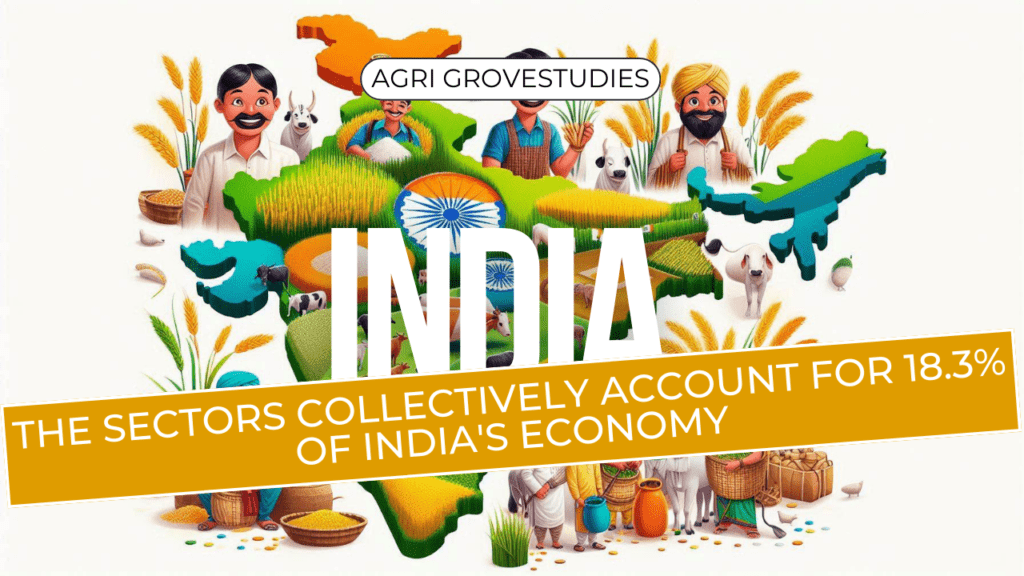Agriculture is crucial to India’s economy, contributing around 18.3% to the nation’s GDP and providing livelihood support to nearly two-thirds of the population.

Employment and Economic Contribution
Agriculture is the largest private sector occupation in India, providing employment to 58% of the country’s workforce. This vast sector not only feeds millions, but also drives other industries by supplying essential raw materials. Industries like textiles, sugar, silk, rice, flour mills, and dairy products rely heavily on agricultural produce. Moreover, agriculture accounts for approximately 15% of India’s total export earnings, underlining its critical role in the nation’s trade and economic stability.
Rural Economy and Market Dynamics
Rural areas, which are home to the majority of India’s population, are a significant market for low-priced and middle-priced consumer goods, including durable goods. The purchasing power in these regions is closely tied to the success of agriculture. Additionally, rural domestic savings, often stemming from agricultural income, play a crucial role as a source of resource mobilization, further driving economic activities.ng economic activities.
Food Security and National Security
The agriculture sector plays a critical role in ensuring food security, which in turn is directly linked to national security. A nation that is able to adequately feed its population is less susceptible to external pressures and can maintain a stable socio-political environment. Additionally, the sector’s capacity to produce surplus food grains not only fulfills domestic demands, but also positions India as a potential contributor to global food security through exports.
Allied Sectors: A Boost to Rural Economy
The connected branches of agriculture, including horticulture, animal husbandry, dairy, and fisheries, are becoming more and more crucial in improving the general economic situation and advancing the health and nutrition of rural inhabitants. These branches provide chances for diversification, lower the risks linked with agriculture, and help stabilize farmers’ income.
Sustainable Development and Ecological Balance
Sustainable development in agriculture is crucial for maintaining ecological balance. The dynamic changes observed in agriculture, from barren soil to lush crops and mature harvests, highlight the sector’s vibrancy. However, the plateauing and decline in agricultural productivity, especially in irrigated areas, require immediate attention from scientists and policymakers to develop innovative and sustainable practices.
Challenges and the Way Forward
Despite its importance, the agricultural sector faces significant challenges, including productivity stagnation, climate change impacts, and resource constraints. Addressing these issues requires a multifaceted approach involving scientific research, technological innovations, policy reforms, and greater investment in rural infrastructure. By enhancing productivity and ensuring sustainable practices, India can continue to secure its food supplies and improve the livelihoods of its vast rural population.
Agriculture in India is not just an economic activity but a way of life for millions. It is a sector that sustains the nation, feeds its people, and drives the rural economy. Ensuring its growth and sustainability is essential for the overall progress of the country. The future of India’s agriculture lies in the hands of its farmers, scientists, and policymakers, who must work together to overcome challenges and harness the full potential of this vital sector.
Discovery of Agasthyamalai Bambootail : A new Species found in India Western Areas
The discovery of a new species of damselfly named the Agasthyamalai Bambootail (scientific name: Melanoneura…
Know how Desertification on Land is helping Ocean Algae to Bloom
Desertification on Land Is Helping Ocean Algae to Bloom” discusses the significant impact of land…
UPPSC Registration is Now Open: Your Guide to Applying – AGRI Grovestudies
Update: Know All about PM Internship Scheme – AGRI Grovestudies
#BusinessIdea: Rainbow Farming in India has significant with Economic and Environment benefits
How to write a Formal letter & their key components – AGRI Grovestudies
A formal letter is a type of written communication that follows a specific format and…
- Discovery of Agasthyamalai Bambootail : A new Species found in India Western Areas
- Know how Desertification on Land is helping Ocean Algae to Bloom
- UPPSC Registration is Now Open: Your Guide to Applying – AGRI Grovestudies
- Update: Know All about PM Internship Scheme – AGRI Grovestudies
- #BusinessIdea: Rainbow Farming in India has significant with Economic and Environment benefits






